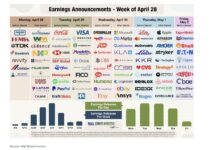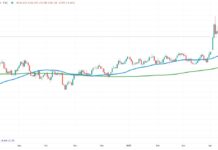Most traders worth their salt have used, or at least heard of covered calls.
Covered calls are really easy to implement and are a proven long-term strategy. However, for some, the costs of implementing this strategy can be prohibitive.
For a covered call trade, the investor needs to purchase 100 shares of the underlying stock.
For a stock like Apple (AAPL), that means coming up with around $17,400 or for Tesla (TSLA), an investor would need nearly $34,800.
A lot of investors do not have that sort of capital, and even if they do, diversification becomes an issue when allocating such a large amount of capital to one stock.
Enter the poor man’s covered call.
This strategy is very similar to a regular covered call but requires only a fraction of the capital to enter the trade.
Even though less capital is required, the dollar returns will be similar on both the upside and the downside.
 Because less capital is used for the (roughly) same dollar gain or loss, the percentage gains and losses are magnified. It’s somewhat similar to trading on margin, so traders need to keep that in mind when deciding whether or not to use this strategy.
Because less capital is used for the (roughly) same dollar gain or loss, the percentage gains and losses are magnified. It’s somewhat similar to trading on margin, so traders need to keep that in mind when deciding whether or not to use this strategy.
To trade a poor man’s covered call, instead of buying 100 shares of the stock, the trader buys a LEAP option.
LEAPS are long-term equity anticipation securities and behave just like other options, but they have a long duration, sometimes up to two years.
ALSO Read: How To Trade An Iron Condor
Using the AAPL example, we could invest $17,400 for a regular covered call, or we could buy a January 19, 2019 call option for around $3,030.
The beauty of using LEAPS for covered calls instead of share is that in the (unlikely) event that AAPL goes bankrupt, the most you can lose is the $3,030 that you put in to the trade.
You can go here to see an example of a poor man’s covered call from 2017 that played out over the course of the year. I used IYR and was able to achieve a return of 37.53% compared to 4.22% for the underlying ETF.
Twitter: @OptiontradinIQ
The author does not have a position in mentioned securities at the time of publication. Any opinions expressed herein are solely those of the author, and do not in any way represent the views or opinions of any other person or entity.







